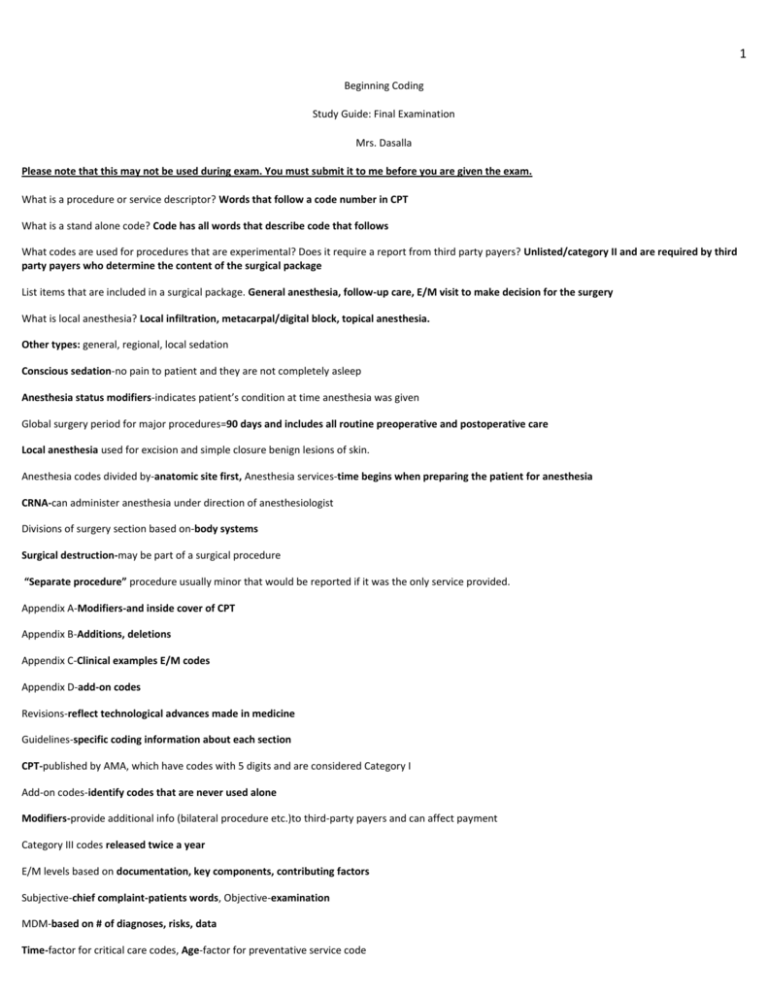Beginning Coding Study Guide: Final Examination Mrs. Dasalla
advertisement

1 Beginning Coding Study Guide: Final Examination Mrs. Dasalla Please note that this may not be used during exam. You must submit it to me before you are given the exam. What is a procedure or service descriptor? Words that follow a code number in CPT What is a stand alone code? Code has all words that describe code that follows What codes are used for procedures that are experimental? Does it require a report from third party payers? Unlisted/category II and are required by third party payers who determine the content of the surgical package List items that are included in a surgical package. General anesthesia, follow-up care, E/M visit to make decision for the surgery What is local anesthesia? Local infiltration, metacarpal/digital block, topical anesthesia. Other types: general, regional, local sedation Conscious sedation-no pain to patient and they are not completely asleep Anesthesia status modifiers-indicates patient’s condition at time anesthesia was given Global surgery period for major procedures=90 days and includes all routine preoperative and postoperative care Local anesthesia used for excision and simple closure benign lesions of skin. Anesthesia codes divided by-anatomic site first, Anesthesia services-time begins when preparing the patient for anesthesia CRNA-can administer anesthesia under direction of anesthesiologist Divisions of surgery section based on-body systems Surgical destruction-may be part of a surgical procedure “Separate procedure” procedure usually minor that would be reported if it was the only service provided. Appendix A-Modifiers-and inside cover of CPT Appendix B-Additions, deletions Appendix C-Clinical examples E/M codes Appendix D-add-on codes Revisions-reflect technological advances made in medicine Guidelines-specific coding information about each section CPT-published by AMA, which have codes with 5 digits and are considered Category I Add-on codes-identify codes that are never used alone Modifiers-provide additional info (bilateral procedure etc.)to third-party payers and can affect payment Category III codes released twice a year E/M levels based on documentation, key components, contributing factors Subjective-chief complaint-patients words, Objective-examination MDM-based on # of diagnoses, risks, data Time-factor for critical care codes, Age-factor for preventative service code






